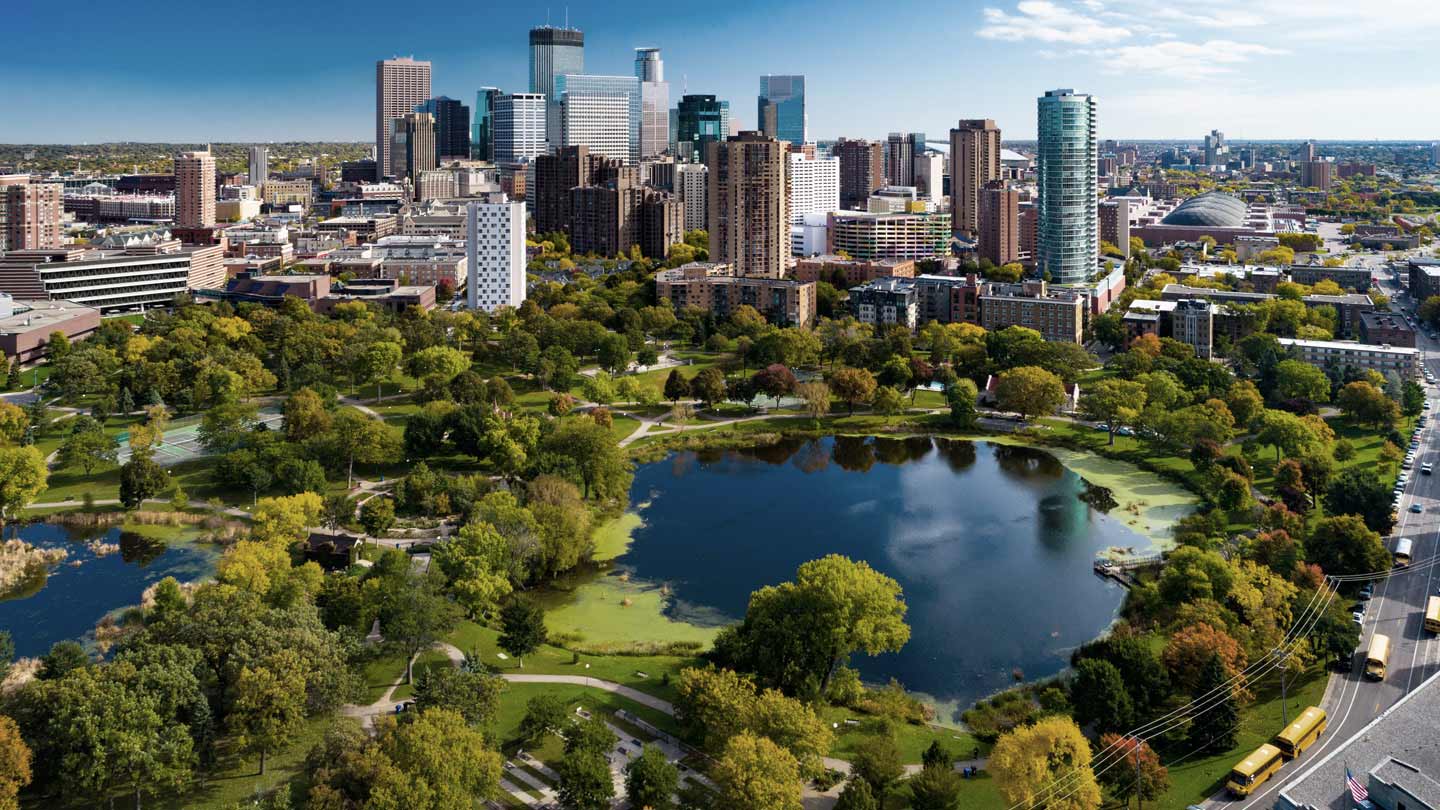From startups to legacy brands, you're making your mark. We're here to help.
-
Innovation Economy
Fueling the success of early-stage startups, venture-backed and high-growth companies.
-
Midsize Businesses
Keep your company growing with custom banking solutions for middle market businesses and specialized industries.
-
Large Corporations
Innovative banking solutions tailored to corporations and specialized industries.
-
Commercial Real Estate
Capitalize on opportunities and prepare for challenges throughout the real estate cycle.
-
Community Impact Banking
When our communities succeed, we all succeed. Local businesses, organizations and community institutions need capital, expertise and connections to thrive.
-
International Banking
Power your business' global growth and operations at every stage.
Key Links
Prepare for future growth with customized loan services, succession planning and capital for business equipment.
-
Asset Based Lending
Enhance your liquidity and gain the flexibility to capitalize on growth opportunities.
-
Equipment Financing
Maximize working capital with flexible equipment and technology financing.
-
Trade & Working Capital
Experience our market-leading supply chain finance solutions that help buyers and suppliers meet their working capital, risk mitigation and cash flow objectives.
-
Syndicated Financing
Leverage customized loan syndication services from a dedicated resource.
-
Commercial Real Estate
Capitalize on opportunities and prepare for challenges throughout the real estate cycle.
-
Employee Stock Ownership Plans
Plan for your business’s future—and your employees’ futures too—with objective advice and financing.
Key Links
Serving the world's largest corporate clients and institutional investors, we support the entire investment cycle with market-leading research, analytics, execution and investor services.
-
Institutional Investors
Putting your long-tenured investment teams on the line to earn the trust of institutional investors.
-
Markets
Direct access to market leading liquidity harnessed through world-class research, tools, data and analytics.
-
Prime Services
Helping hedge funds, asset managers and institutional investors meet the demands of a rapidly evolving market.
-
Global Research
Leveraging cutting-edge technology and innovative tools to bring clients industry-leading analysis and investment advice.
-
Securities Services Solutions
Helping institutional investors, traditional and alternative asset and fund managers, broker dealers and equity issuers meet the demands of changing markets.
Key Links
Providing investment banking solutions, including mergers and acquisitions, capital raising and risk management, for a broad range of corporations, institutions and governments.
-
Center for Carbon Transition
J.P. Morgan’s center of excellence that provides clients the data and firmwide expertise needed to navigate the challenges of transitioning to a low-carbon future.
-
Corporate Finance Advisory
Corporate Finance Advisory (“CFA”) is a global, multi-disciplinary solutions team specializing in structured M&A and capital markets. Learn more.
-
Development Finance Institution
Financing opportunities with anticipated development impact in emerging economies.
-
Sustainable Solutions
Offering ESG-related advisory and coordinating the firm's EMEA coverage of clients in emerging green economy sectors.
-
Mergers and Acquisitions
Bespoke M&A solutions on a global scale.
-
Capital Markets
Holistic coverage across capital markets.
Your partner for commerce, receivables, cross-currency, working capital, blockchain, liquidity and more.
Key Links
A uniquely elevated private banking experience shaped around you.
-
Banking
We have extensive personal and business banking resources that are fine-tuned to your specific needs.
-
Investing
We deliver tailored investing guidance and access to unique investment opportunities from world-class specialists.
-
Lending
We take a strategic approach to lending, working with you to craft the right financing solutions matched to your goals.
-
Planning
No matter where you are in your life, or how complex your needs might be, we’re ready to provide a tailored approach to helping your reach your goals.
Whether you want to invest on your own or work with an advisor to design a personalized investment strategy, we have opportunities for every investor.
-
Invest on your own
Unlimited $0 commission-free online stock, ETF and options trades with access to powerful tools to research, trade and manage your investments.
-
Work with our advisors
When you work with our advisors, you'll get a personalized financial strategy and investment portfolio built around your unique goals-backed by our industry-leading expertise.
-
Expertise for Substantial Wealth
Our Wealth Advisors & Wealth Partners leverage their experience and robust firm resources to deliver highly-personalized, comprehensive solutions across Banking, Lending, Investing, and Wealth Planning.
For Companies and Institutions
-
Commercial Banking
From startups to legacy brands, you're making your mark. We're here to help.
-
Institutional Investing
Serving the world's largest corporate clients and institutional investors, we support the entire investment cycle with market-leading research, analytics, execution and investor services.
-
Payments
Your partner for commerce, receivables, cross-currency, working capital, blockchain, liquidity and more.
-
Credit & Financing
Prepare for future growth with customized loan services, succession planning and capital for business equipment.
-
Investment Banking
Providing investment banking solutions, including mergers and acquisitions, capital raising and risk management, for a broad range of corporations, institutions and governments.
For Individuals
-
Private Bank
A uniquely elevated private banking experience shaped around you.
-
Wealth Management
Whether you want to invest on you own or work with an advisor to design a personalized investment strategy, we have opportunities for every investor.
Explore a variety of insights.
Key Links
Insights by Topic
Explore a variety of insights organized by different topics.
Key Links
Insights by Type
Explore a variety of insights organized by different types of content and media.
Key Links
We aim to be the most respected financial services firm in the world, serving corporations and individuals in more than 100 countries.
Key Links
- Insights
- Real Estate
- Commercial Real Estate
- Commercial real estate and the e-commerce boom

By Alfred R. Brooks
Vice Chair of Commercial Banking
By Alfred R. Brooks
E-commerce is no longer a trend; it’s business as usual.
Just as multifamily and office building tenants expect to pay rent online, they also view large mailrooms and storage lockers for package deliveries as a given.
While e-commerce has created lasting changes across all asset classes, it has had an outsized impact on industrial and retail properties. The two asset classes are closely tied, with successful businesses combining seamless online shopping and quick delivery with physical locations that stand out.
"It’s not about physical versus online anymore: The real winners will be the ones who can optimize channel control, dominating the market and delighting their customers in both physical outlets and online options."
-Victor Calanog, Head of CRE Economics at Moody’s Analytics
Last-mile delivery drives warehouse locations
Industrial properties are thriving and continue to evolve based on consumer demand. The desire for same-day delivery and the need to get products into consumers’ hands sooner helps drive innovation, from investments in last-mile distribution complexes to drones.
“There is a natural limit given physical congestion concerns—unless we build much wider and better built highways,” said Victor Calanog, Head of CRE Economics at Moody’s Analytics. “The game is about dominating both physical and online channels. That’s why Amazon bought Whole Foods. Whole Foods and competitors such as Walmart and Target have that physical distribution complex that a pure online seller simply does not.”
- Shifting warehouse locations: Last-mile delivery is a requirement for all retailers. To fulfill the delivery demand, industrial properties are looking for ways to expand, and retailers are moving fulfillment spaces to the center of the country.
- Adaptive reuse of malls: Vacant B and C class malls and big box stores can make ideal warehouse and fulfillment center locations; they’re centrally located, with lots of open space and parking. Many also have dock doors and clear heights compatible with warehouse use.
The rise of experiential retail
Many retailers exist only online and don’t have plans to create a physical presence. Other businesses that began as brick-and-mortar stores have made the shift to online-only operations in recent years.
Then there’s a third group of brands. Most of them got their start online and are now adding physical stores, usually in select locations. Their stores aim to deliver a unique, in-person experience. For example:
- Savage X Fenty “celebrates fearlessness, confidence and inclusivity.” In keeping with this theme, the lingerie brand’s brick-and-mortar stores feature soft lighting in multiple colors, mannequin replicas of the brand’s models in a range of sizes and genders and Fit Xperience technology to help customers find the best fit.
- Tecovas’ brick-and-mortar locations offer personal appointments so customers can have their measurements taken and try the brand’s cowboy boots in a variety of sizes and styles. They can either purchase directly from the store or have their boots shipped. The store also offers embossing on all leather goods, plus complimentary boot shines and beer, bourbon and other beverages.
"The pandemic compressed about a decade’s worth of evolution from physical to online shopping in three months. The pendulum has begun to swing back, but it’s likely that, over the long run, the online platform will be the battleground of the future."
-Victor Calanog, Head of CRE Economics at Moody’s Analytics
We're here to help
With no signs of slowing down, the e-commerce boom will continue to impact commercial real estate. JPMorgan Chase’s Commercial Real Estate team of local experts is here help you navigate the changing landscape for success both today and in the future.
© 2022 JPMorgan Chase & Co. All rights reserved. JPMorgan Chase & Co. All rights reserved. JPMorgan Chase Bank, N.A. Member FDIC. Visit jpmorgan.com/cb-disclaimer for disclosures and disclaimers related to this content.
Get in touch
Related insights

Real Estate
Denver multifamily market update
Apr 16, 2025
Transactions are beginning to pick up in Denver, plus key trends for investors to watch in 2025.

Real Estate
Higher education’s role in workforce housing development
Apr 14, 2025
Find out how colleges and universities can help meet the need for workforce housing—and why it’s a win-win for institutions and their communities.

Real Estate
The impacts of inflation on commercial real estate
Apr 09, 2025
Higher inflation can increase financing and operating costs and decrease property values. But an inflationary environment does offer opportunities for commercial real estate.

Real Estate
Investing in opportunity across the heartland of America
Mar 26, 2025
Small cities and rural areas across America face hurdles accessing investment that powers opportunity. Find out how JPMorganChase is ramping up investment to help close the gap.

Real Estate
Portland multifamily market update
Mar 24, 2025
From shifting renter preferences to elevated interest rates, here are key trends for Portland real estate investors to watch in 2025.

Real Estate
What to know about tax-aware borrowing
Mar 20, 2025
Individuals can choose to take out loans in a way that may minimize their tax liability – this is called tax-aware borrowing. Learn more about it.

Real Estate
Fraud protection for commercial real estate
Mar 12, 2025
Commercial real estate payments are especially attractive to criminals. Find out how ACH Debit Block, Check Protection Services and Check Monitoring can help you prevent fraud.

Real Estate
Minneapolis multifamily market update
Mar 10, 2025
Out-of-state buyers are having a stabilizing effect on Minneapolis’ multifamily market, plus more key trends for investors to watch in 2025.
You're now leaving J.P. Morgan
J.P. Morgan’s website and/or mobile terms, privacy and security policies don’t apply to the site or app you're about to visit. Please review its terms, privacy and security policies to see how they apply to you. J.P. Morgan isn’t responsible for (and doesn’t provide) any products, services or content at this third-party site or app, except for products and services that explicitly carry the J.P. Morgan name.